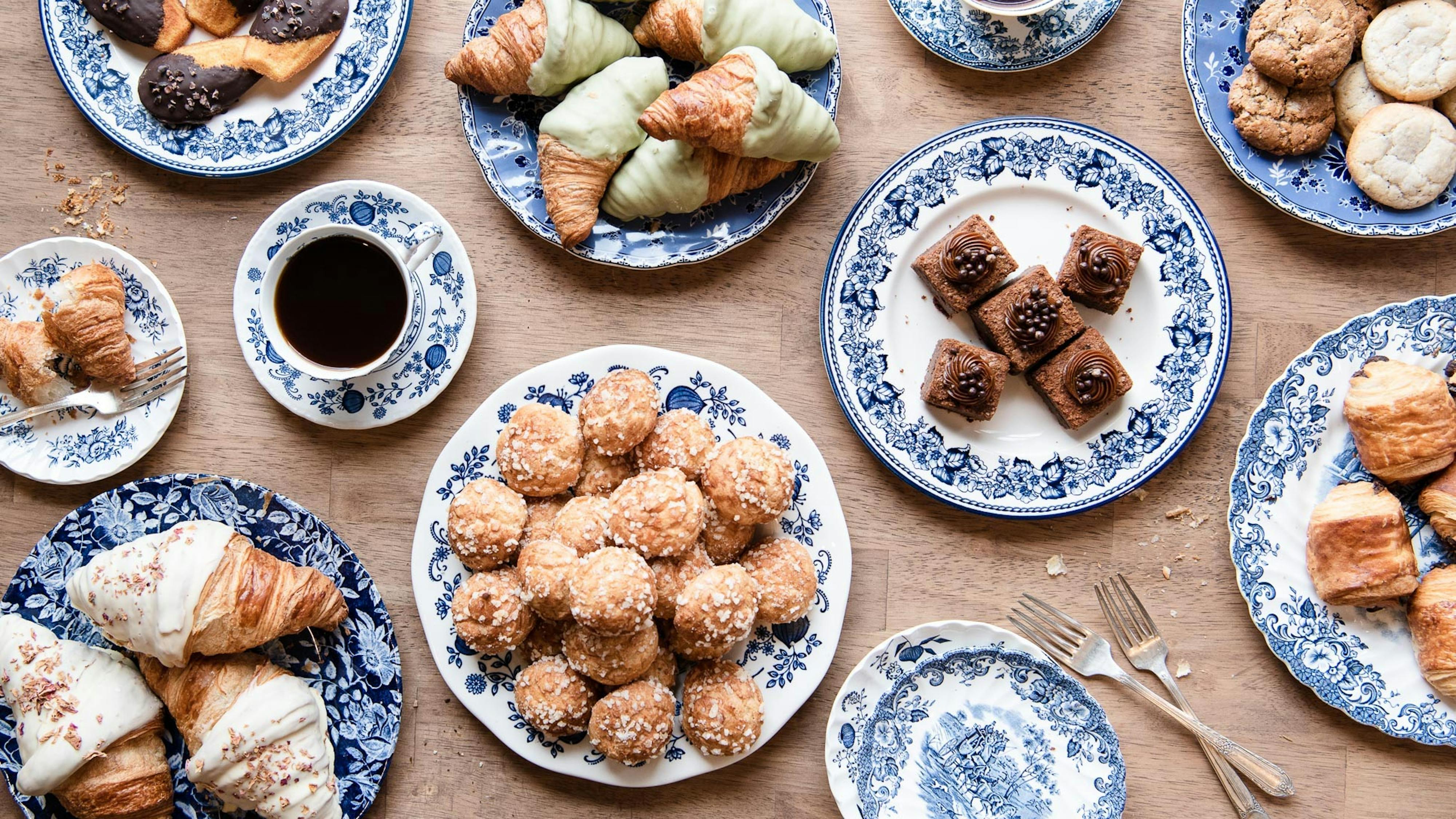Make Your Celebration Special with Birthday Catering Maddington
Comprehending the Art of Pastry Shop Products: From Fresh Baked Breads to Alluring Pastries and Finger Foods
The detailed art of bakery products includes a range of techniques and ingredients that change standard components into cooking thrills. From the scientific research behind the perfect loaf of bread, where fermentation and gluten development play critical duties, to the finesse required for producing split breads, each facet discloses an engaging story of craftsmanship. Additionally, the adaptability of finger foods illustrates how flavor and texture can be artfully integrated to engage diverse taste preferences. As we discover these components, one might question: what underlying concepts regulate the success of these cherished developments?
The Science of Bread Making
At the heart of every loaf of bread lies a fascinating interaction of chemistry and biology. The process of bread making begins with the mix of flour, salt, yeast, and water-- each component playing a crucial function in the last item.
Yeast, a living organism, ferments the sugars present in the flour, generating co2 and alcohol in the process. The co2 gas develops bubbles in the dough, causing it to increase and create a light texture. The temperature and humidity throughout fermentation significantly influence yeast activity and, subsequently, the bread's taste and texture.

Learning Bread Methods
How can one accomplish the delicate equilibrium of appearance and flavor that specifies remarkable bread? Mastering bread techniques needs a deep understanding of ingredients, techniques, and the science behind them. Essential to this craft is the option of top notch ingredients-- flour, butter, sugar, and eggs-- each playing a vital role in the end product's flavor and structure.
The strategy of lamination, which involves folding layers of dough and butter, produces the desired flakiness in pastries like croissants and smoke bread. Precision in temperature level is vital, as butter ought to continue to be cold to guarantee optimum layers. Correct blending methods, such as the creaming method for cakes, make sure also unification of air and fat, resulting in a light and airy crumb.
Furthermore, preserving the ideal moisture degrees throughout baking can considerably impact the result, making sure that breads rise correctly and accomplish that golden-brown surface. The art of bread additionally requires persistence and method; each effort enhances one's skill and understanding of the elaborate balance needed to produce alluring pastries that delight the detects. Proficiency in these strategies eventually differentiates a proficient bread chef from an amateur.
Types of Finger Foods
The world of cooking thrills prolongs beyond breads to incorporate a large variety of finger foods, which are celebrated for their convenience and convenience. These bite-sized deals with are best for celebrations, providing an array of tastes and appearances that cater to diverse tastes.

On the sweeter side, bite-sized cupcakes and mini tarts provide a official source fascinating coating to any meal, appealing to those with a wonderful tooth. In addition, cheese and charcuterie boards work as a sophisticated choice, allowing guests to personalize their bites with a variety of meats, fruits, cheeses, and nuts.
Taste Profiles in Cooking
Cooking is a detailed dancing of taste profiles that combines sweet, tasty, and umami notes to create a harmonious experience for the taste. Recognizing these accounts is necessary for bakers looking for to raise their creations.
Components such as delicious chocolate and caramel present complicated sweet notes that can either control or complement various other flavors. Components like seasonings, cheeses, and herbs can change a simple dough right into a complex flavor experience.
Umami, regularly neglected in cooking, plays a significant function in improving flavors. Components such as aged cheeses, fermented items, or even specific nuts add to a tasty deepness that enhances general preference.
Additionally, the interplay of level of acidity from active ingredients like buttermilk or citrus zest can lighten up tastes, offering a rejuvenating counterpoint to sweet taste. By attentively integrating these taste accounts, bakers can craft items that resonate with varied tastes buds, creating a remarkable cooking experience. Ultimately, grasping flavor profiles is crucial to technology in the world of baking.
Vital Baking Tools and Active Ingredients
Comprehending flavor profiles in baking collections the phase for choosing the right tools and ingredients that facilitate the production of phenomenal baked products. A reputable set of cooking frying pans-- such as sheet pans, loaf pans, and cake frying pans-- is vital for accomplishing desired structures and forms.
In regards to components, quality issues substantially. Flour serves as the foundation of a lot of recipes; picking the ideal type-- be it bread, all-purpose, or pastry flour-- can considerably affect the end result. Sugar not just sweetens but additionally contributes to appearance, while eggs function as binders and leavening representatives. Baking powder and cooking soda are crucial for producing lift in cakes and pastries.
Furthermore, including flavor boosters like vanilla remove, spices, and citrus passion can boost your creations. By why not check here making certain access to these essential devices and ingredients, bakers can with confidence get started on their culinary journey, crafting a varied array of delightful baked products.
Verdict
In conclusion, the art of bakeshop items incorporates an extensive understanding of both innovative strategies and clinical principles. Mastery in bread production, bread prep work, and finger food presentation reveals the elaborate partnerships in between processes and components. Exploring diverse flavor profiles improves the baking experience, while essential tools and ingredients provide the structure for success. Inevitably, the charming world of baking prospers on the unified interaction of science and imagination, leading to a myriad of wonderful culinary creations.
Just how can one attain the delicate equilibrium of appearance and flavor that specifies phenomenal bread? Fundamental to this craft is the option of top notch components-- flour, butter, sugar, and eggs-- each playing an important duty in the final item's flavor and appearance.

Understanding flavor profiles in baking sets the stage for choosing the right tools and components that assist in the production of exceptional baked goods. Exploring diverse flavor profiles enriches the baking experience, while important tools and ingredients offer the foundation for success.